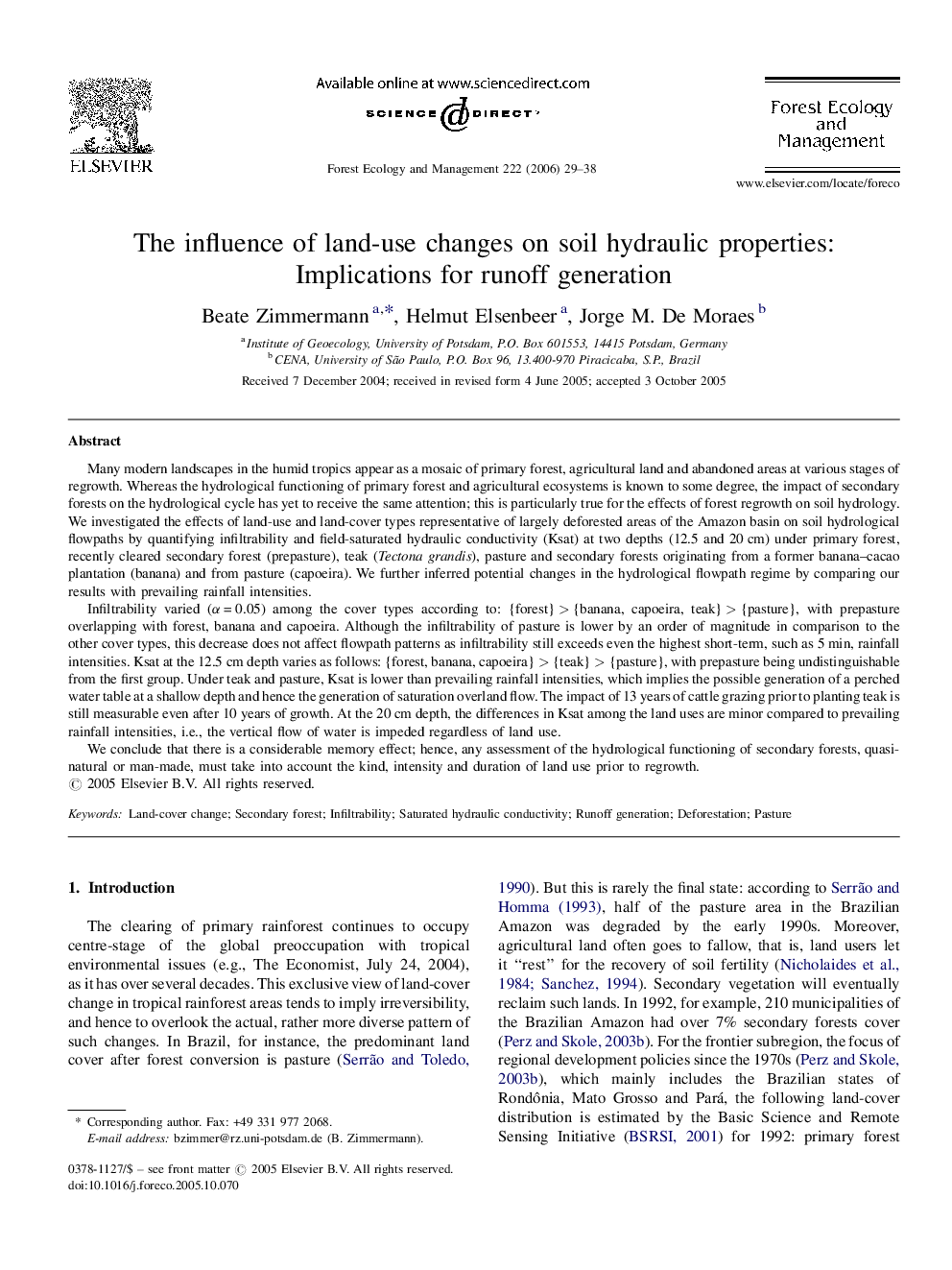| Article ID | Journal | Published Year | Pages | File Type |
|---|---|---|---|---|
| 90695 | Forest Ecology and Management | 2006 | 10 Pages |
Many modern landscapes in the humid tropics appear as a mosaic of primary forest, agricultural land and abandoned areas at various stages of regrowth. Whereas the hydrological functioning of primary forest and agricultural ecosystems is known to some degree, the impact of secondary forests on the hydrological cycle has yet to receive the same attention; this is particularly true for the effects of forest regrowth on soil hydrology. We investigated the effects of land-use and land-cover types representative of largely deforested areas of the Amazon basin on soil hydrological flowpaths by quantifying infiltrability and field-saturated hydraulic conductivity (Ksat) at two depths (12.5 and 20 cm) under primary forest, recently cleared secondary forest (prepasture), teak (Tectona grandis), pasture and secondary forests originating from a former banana–cacao plantation (banana) and from pasture (capoeira). We further inferred potential changes in the hydrological flowpath regime by comparing our results with prevailing rainfall intensities.Infiltrability varied (α = 0.05) among the cover types according to: {forest} > {banana, capoeira, teak} > {pasture}, with prepasture overlapping with forest, banana and capoeira. Although the infiltrability of pasture is lower by an order of magnitude in comparison to the other cover types, this decrease does not affect flowpath patterns as infiltrability still exceeds even the highest short-term, such as 5 min, rainfall intensities. Ksat at the 12.5 cm depth varies as follows: {forest, banana, capoeira} > {teak} > {pasture}, with prepasture being undistinguishable from the first group. Under teak and pasture, Ksat is lower than prevailing rainfall intensities, which implies the possible generation of a perched water table at a shallow depth and hence the generation of saturation overland flow. The impact of 13 years of cattle grazing prior to planting teak is still measurable even after 10 years of growth. At the 20 cm depth, the differences in Ksat among the land uses are minor compared to prevailing rainfall intensities, i.e., the vertical flow of water is impeded regardless of land use.We conclude that there is a considerable memory effect; hence, any assessment of the hydrological functioning of secondary forests, quasi-natural or man-made, must take into account the kind, intensity and duration of land use prior to regrowth.
